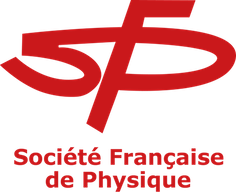Orateur
Description
The ALICE Collaboration focuses on studying the matter at extremely high temperature and density created by heavy-ion collisions in the laboratory. This state of matter is called quark-gluon plasma (QGP) and is made of deconfined quarks and gluons. The QGP is thought to exist for the first few microseconds after the Big Bang. During the collision, many particles are produced, in particular the charmonia, bound states of elementary particles, charm quarks and antiquarks. The J/ψ, one of the charmonium states, is considered as a probe of the QGP properties. In the QGP phase and if the temperature is large enough, the J/ψ is predicted to be dissociated because of a mechanism called color screening. Indeed the high density of color charges in the deconfined medium can screen the interquark potential and prevent the formation of the bound state. This is known as J/ψ melting. On the other hand, at LHC colliding energy, another mechanism of J/ψ production can be considered. Since the production cross section of charm-anticharm quark pairs is large, charmonia (including J/ψ) can be formed in or at the end of the QGP phase, from uncorrelated deconfined charm and anticharm quarks. This is called the regeneration mechanism. To study the J/ψ yield modifications by the hot medium effects in heavy-ion collisions, one physical observable is measured, which is the nuclear modification factor $R_{AA}$. Precisely, $R_{AA}$ is the ratio of J/ψ yield in heavy-ion and nucleon-nucleon collisions, scaled by a normalization factor, the number of binary nucleon-nucleon collisions. In this talk, we report on the J/ψ $R_{AA}$ measurement as a function of transverse momentum ($p_{T}$ ) in Pb-Pb collisions at $\sqrt{s_{NN}}$ = 5.02 TeV, and on the J/ψ reference cross section measurement in pp collisions at the same energy. The measurement is performed in the dimuon decay channel with ALICE muon spectrometer. These new data in Pb-Pb and pp collisions, corresponding to the LHC Run2 statistics, allow one to extend the previous $R_{AA}$, pp cross section up to $p_{T}$ = 20 GeV/c, and to study the $R_{AA}$ multi-differentially in $p_{T}$, rapidity (y) and centrality.

